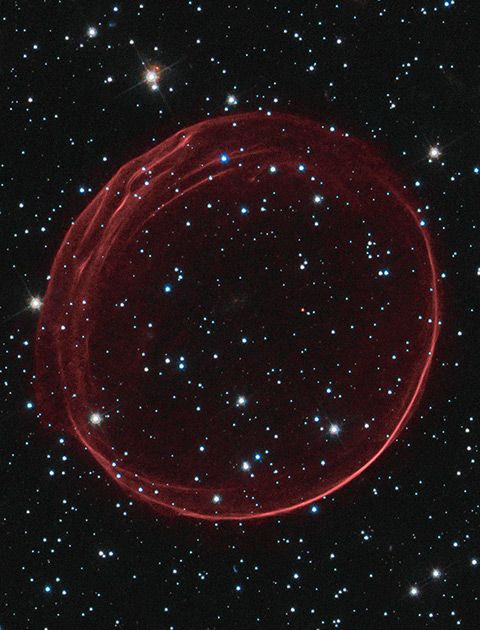NASA Celebrates Holidays With Stunning Photo Of Cosmic Christmas Ornament

KEY POINTS
- NASA shared a photo of a supernova remnant from the Large Magellanic Cloud
- The supernova remnant resembles a cosmic holiday ornament
- A collision between two stars may have created the supernova remnant
NASA recently shared a beautiful image of a delicate-looking supernova remnant that may have been caused by a violent collision between two stars. Due to its appearance, the agency referred to it as a crimson holiday ornament in space.
The image shared by the agency through Instagram features the supernova remnant known as SNR 0509-67.5. It was photographed by NASA and the European Space Agency’s Hubble Space Telescope.
SNR 0509-67.5 is located within the Large Magellanic Cloud and is situated about 160,000 light-years away from Earth. According to NASA, this spectacular cosmic object was caused by a star that exploded about 400 years ago.
It is classified as a Type 1a supernova, which means the stellar explosion occurred in a binary system composed of two orbiting stars. One of these stars is a white dwarf while the other one could be a giant star or a smaller white dwarf.
Although it is possible that these two stars collided and caused a supernova, other theories suggest that the white dwarf may have exploded after running out of energy.
“One explanation is that a white dwarf self-destructs after using its gravity to steal material from a nearby star, causing it to become unstable under the extra bulk and explode,” NASA explained. “Another idea is that the detonation happens when two white dwarfs collide, destroying both objects.”
In the image provided by NASA, SNR 0509-67.5 is mainly characterized by a thin sphere of gas expanding across space. According to the agency, this was created by the explosion from the supernova.
“The delicate sphere of gas, photographed by NASA's Hubble Space Telescope, is the result of gas that is being shocked by the expanding blast wave from a supernova,” NASA explained in a statement.
Currently, the sphere has a diameter of about 23 light-years and is currently expanding at a speed of over 11 million miles per hour. Near the upper-left portion of the supernova remnant are ripples in the expanding gas bubble. NASA believes these ripples were caused by the ejection of uneven cosmic debris following the white dwarf’s explosion.
© Copyright IBTimes 2024. All rights reserved.




















